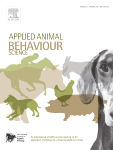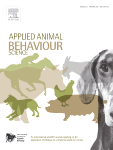Document type : Scientific article published in Applied Animal Behaviour Science
Authors: Renee S.Willis, Patricia A. Fleming, Emma J. Dunston-Clarke, Anne L. Barnes, David W. Miller, Teresa Collins
Preview: The welfare of sheep transported by sea is a pertinent issue for Australia's agriculture industry and a subject of concern amongst the general public. Evaluating the effect of sea transport on the welfare of livestock requires an accurate system of reporting. This study piloted an animal welfare monitoring protocol during two sea voyages from Australia to the Middle East. Sheep health and behaviour were analysed to determine if the protocol could detect animal responses to voyage conditions such as feeding management and changes to the pen environment. Data were recorded for target pens of five different commercial lines of Merino sheep. Principle Components (PC) analysis on behavioural data identified three principal components which were compared with voyage day, management and environmental conditions using general linear mixed modelling (GLMM). PC factor 1 scores (23.35 % of total variance) showed that resting and recumbency increased as the voyage progressed. PC factor 2 scores (17.09 % variance) demonstrated that behavioural responses to heat fluctuated by voyage day. PC factor 3 scores (9.48 % variance) showed reduced flight distances and increasingly competitive feeding behaviour as the voyage progressed. Environment and management conditions were associated with behavioural changes, with Wet Bulb Globe Temperature (WBGT) being the most influential measure affecting all three PC factors (p < 0.001). There were few diseases or symptoms of ill-health (including veterinary treatments) or mortalities recorded for sample pens; however, associations between ill-health and nutrition, environmental conditions and behaviour, were identified using GLMM. Increases in WBGT were linked to increased nasal discharge (p < 0.001), ocular discharge (p < 0.05), pink eye (p < 0.05) and Panting Score 4 (p < 0.01). With few recordings of ill-health, and a low mortality incidence, it was difficult to interpret the results of comparisons between health and behaviour. It is likely that associations between health indicators and behavioural variations will be more meaningful if a welfare monitoring protocol were applied to a larger sample size. The pen-side assessments presented in this study provided a practicable and comprehensive system for monitoring the behaviour and health of sheep during sea voyages. The application of such assessments on an industry basis could better inform all stakeholders about the welfare of sheep during sea transport.






